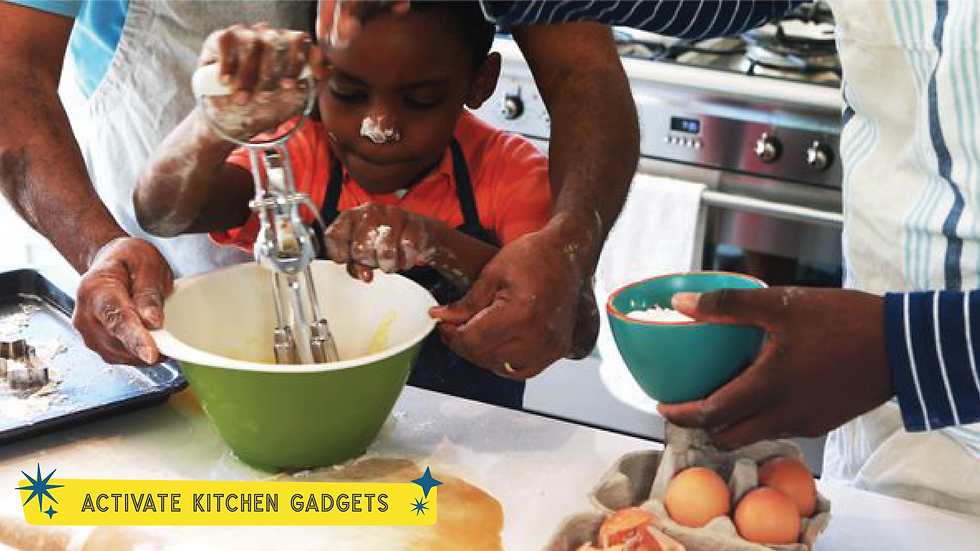A Parent's Guide to Making Cooking Fun for Kids
- Lillion Hunt

- Aug 22, 2024
- 3 min read

The Mission Society is cooking up STEAM lessons with our second annual Mission Nutrition series. All summer long, we’re sharing delicious dishes and kitchen experiments that will transform young people into seasoned scientists, artists, mathematicians, and more. In this piece, we’re blending STEAM and culinary activities to turn the kitchen into an exciting learning environment for junior chefs, along with insights from a parent on how to make this experience even more enriching.
With a little imagination, the kitchen becomes a space where kids can play, learn, and enjoy every step of making delicious meals. When we turn meal preparation into a playful learning experience, we can introduce young minds to the wonders of STEAM in an engaging way that lets them play like kids and cook like chefs. As they mix, measure, and experiment with ingredients, they explore important STEAM concepts, solve problems, and think creatively - connecting those kitchen activities to our classroom lessons.
Join us as we discover creative ways to make cooking fun for kids and spark curiosity and learning with every recipe.

Watch your kitchen helper transform into a curious scientist! Eggs are a staple in many recipes and can be used to teach kids about density and buoyancy with the egg float test. Fill a bowl with room-temperature water, place the eggs inside, and observe what happens. Fresh eggs have a smaller air cell, so they sink in water. As eggs get older, the air cell enlarges, making them less dense and causing them to float to the surface. This practical and educational experiment ensures you're using the freshest ingredients for your recipes and offers a hands-on lesson in science right from your kitchen!

Turn everyday cooking into a tech-savvy adventure! Introduce your junior chef to kitchen gadgets like blenders and electric hand mixers. While whipping up a fruit smoothie or mixing pancake batter, explain how each gadget works and let your child take the reins to see the technology in action. One parent shares how this hands-on approach not only makes learning about tech fun but also helps create memorable moments in the kitchen.


Engineering is all about building and innovation! One exciting way to connect cooking with engineering is by working together to create a solar oven. Using a pizza box, aluminum foil, and a few other supplies, you can build a functional oven that captures the sun's energy to melt chocolate or make s’mores. As kids work through the steps, they’ll be introduced to important engineering principles like identifying challenges, brainstorming solutions, and building prototypes just like a real engineer. They’ll gain valuable experience in problem-solving and creativity, all while enjoying a sweet treat.

Transform your kitchen into a playground of culinary fun! Colorful spatulas, whisks, and mixing bowls make the kitchen more inviting for junior chefs who may recognize similar tools from their play kitchens. Add to the excitement by wearing chef coats, hats, and aprons, turning cooking into a fun dress-up activity that helps bridge the gap between pretend play and real-life cooking. With these vibrant tools and outfits, children can express their creativity and feel like real chefs as they mix, stir, and bake.

Math is everywhere, especially in the kitchen! Play a game of I Spy encouraging your sous chef to point out different shapes they can spot around the kitchen like round egg yolks, rectangular baking sheets, and triangular tortilla chips. This activity helps them see how math connects to everyday objects and makes it easier to identify geometric shapes. If they're ready for more fun, ask them to measure ingredients with measuring cups, teaspoons, and scales. Jamila shared with us that it’s okay if they make a small mess; it’s all part of the learning process and helps build their confidence in tackling math concepts in a fun and engaging way.




Comments